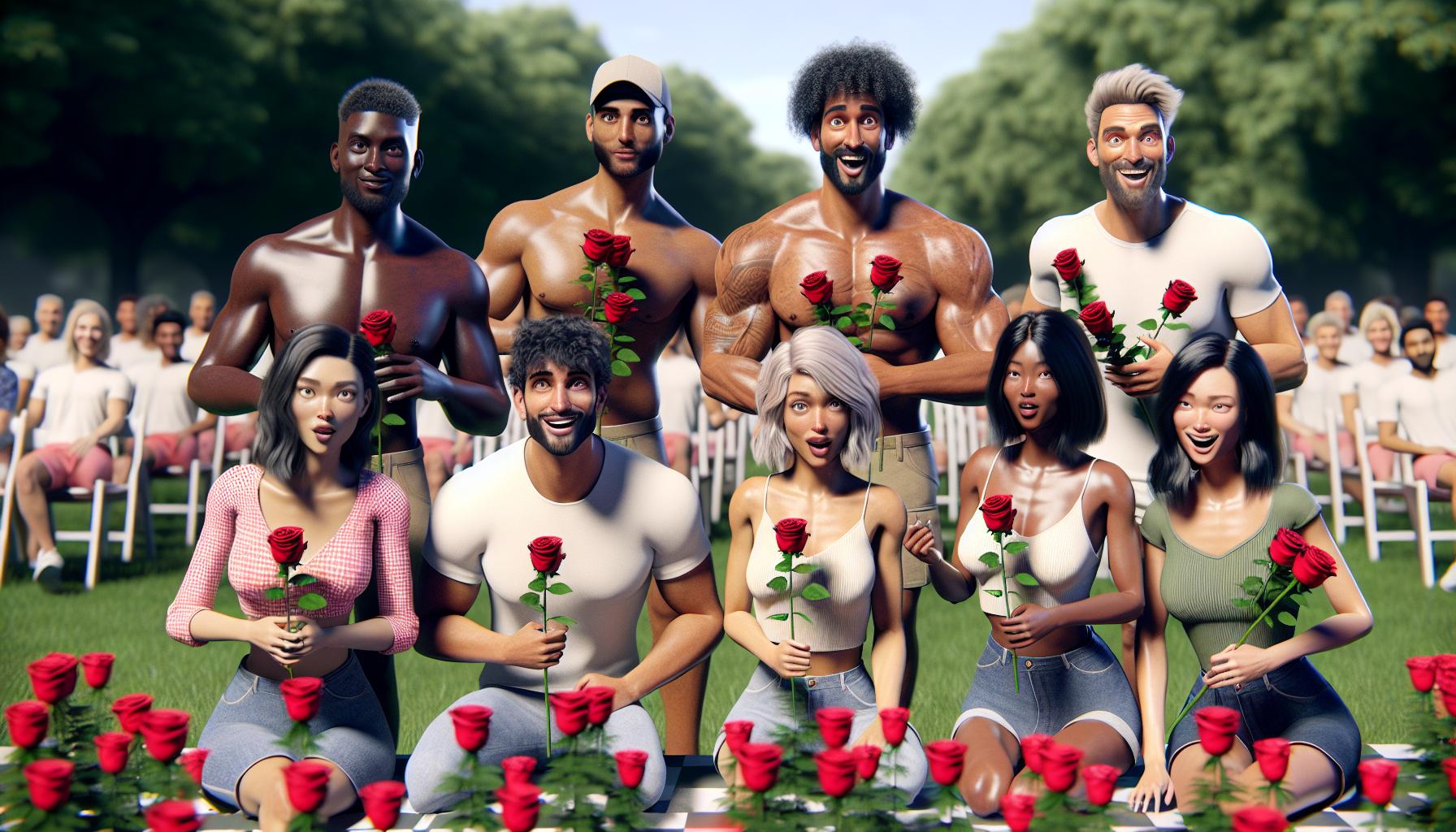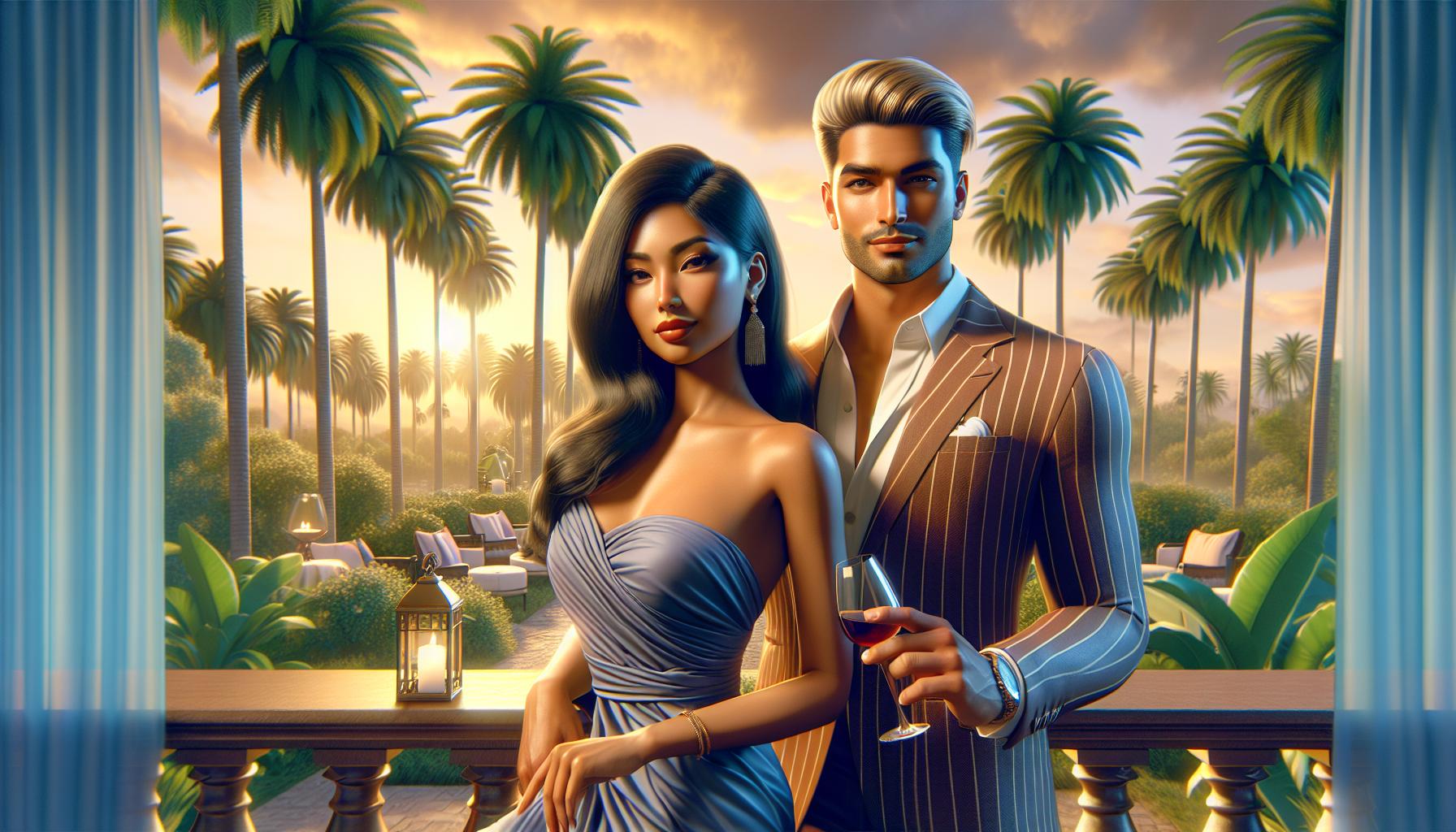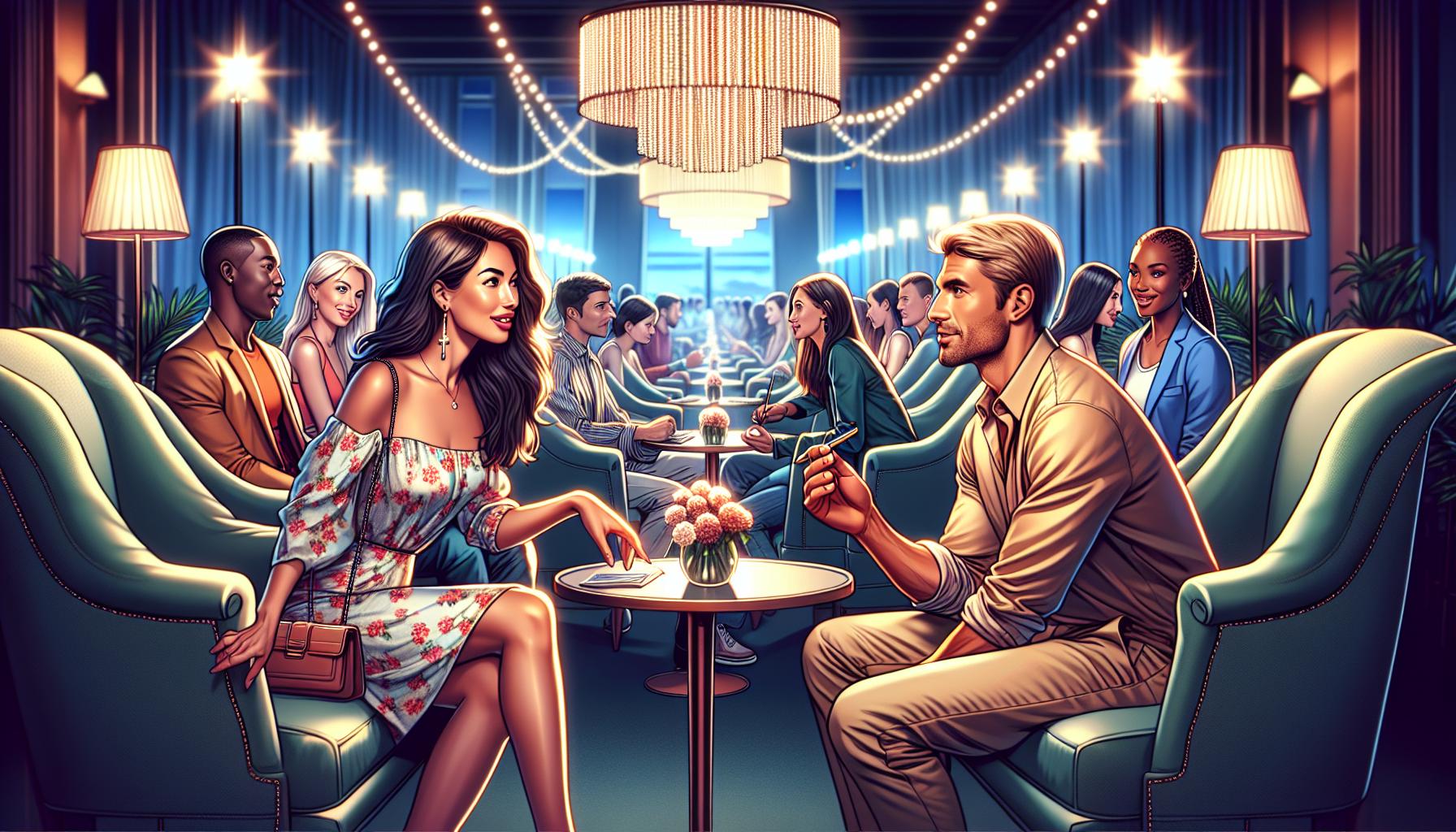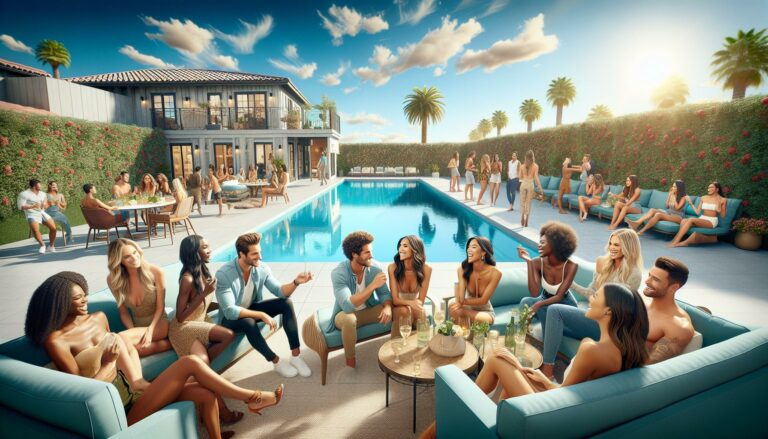Love, drama, and outrageous moments have turned reality dating shows into an irresistible guilty pleasure for millions of viewers worldwide. From The Bachelor to Love Island, these addictive programs showcase singles searching for romance under the watchful eye of cameras, creating television gold that keeps audiences glued to their screens.
These shows have evolved from simple matchmaking concepts into complex social experiments that tap into human psychology and relationship dynamics. While critics may dismiss them as mindless entertainment, reality dating shows have become cultural phenomena that reflect modern dating challenges and society’s changing views on love and relationships. They’ve also launched countless careers, sparked social media frenzies, and even resulted in some genuine lasting relationships – though finding true love might not always be the real prize contestants are seeking.
The Evolution of Dating Reality TV Shows
Dating reality shows transformed from simple matchmaking formats into complex social experiments over the past two decades. The genre expanded to include diverse relationship dynamics while adapting to changing viewer preferences.
From The Bachelor to Love Is Blind
The Bachelor premiered in 2002, introducing a format where one person dates multiple potential partners. Dating shows evolved beyond traditional setups with innovations like Love Island’s continuous filming format in 2015. Modern programs like Love Is Blind (2020) incorporate social experiments by having contestants form emotional connections without seeing each other. These shows integrate unique elements such as Dating Naked’s emphasis on vulnerability or Married at First Sight’s scientific matchmaking approach. Recent productions feature more diverse casting with shows like Dating Around showcasing LGBTQ+ relationships.
How Social Media Changed Dating Shows
Social media platforms revolutionized viewer engagement with dating reality shows through real-time commentary. Instagram follower counts now influence contestant selection, with many participants gaining 100,000+ followers during their show appearances. Dating shows integrate social media elements like Too Hot to Handle’s contestant social media bans or The Circle’s social media-inspired format. Live-tweeting events generate millions of impressions, creating trending topics during premiere episodes. Contestants leverage their reality TV exposure to build personal brands through platforms like TikTok, Instagram reels, and YouTube vlogs.
Popular Dating Show Formats

Reality dating shows employ distinct formats to captivate audiences through unique approaches to finding love. Each format creates different dynamics among contestants while maintaining entertainment value.
Competition-Based Dating Shows
Competition-based dating formats pit contestants against each other for love interests through elimination rounds. Shows like The Bachelor eliminate participants weekly through rose ceremonies until one winner remains. Dating game shows such as Are You The One? feature cash prizes alongside romantic pursuits, with contestants solving match puzzles for monetary rewards. Paradise Hotel introduces new competitors regularly, forcing existing couples to prove their connections or risk elimination. These formats create drama through strategic gameplay elements like immunity challenges, secret voting sessions or partner-swapping ceremonies.
Social Experiment Dating Shows
Social experiment formats focus on testing relationship theories through controlled environments. Shows like Love Is Blind place singles in pods where they communicate without seeing each other, emphasizing emotional connections. Married at First Sight pairs strangers based on expert matchmaking, documenting their journey from wedding day forward. Too Hot to Handle challenges physically attractive contestants to form deeper bonds by restricting physical intimacy. Dating Around removes competitive elements entirely, following one person’s experience with multiple blind dates to explore modern dating dynamics. These formats examine how different variables impact relationship development under observation.
Impact on Modern Dating Culture

Reality TV dating shows shape contemporary dating behaviors by influencing social norms, expectations, and relationship dynamics in significant ways.
Unrealistic Expectations
Reality dating shows create distorted views of romantic relationships through manufactured scenarios. Contestants receive luxury dates, exotic locations, and professional styling teams that don’t reflect typical dating experiences. Dating show participants often display exaggerated emotional responses within compressed timelines, leading viewers to internalize unrealistic relationship milestones. Research from the Journal of Social Psychology indicates 73% of regular viewers develop heightened expectations about physical appearance, romantic gestures, and relationship progression speeds. Social media surveys reveal that 45% of young adults compare their dating experiences to reality show scenarios, resulting in disappointment with normal dating interactions.
Influencer Culture and Dating Shows
Dating show contestants transform into social media influencers, blending entertainment with digital marketing opportunities. Instagram analytics show former contestants gain an average of 250,000 followers during their show appearances. These reality TV personalities monetize their newfound fame through sponsored content, creating a direct link between dating shows and social media marketing. Dating app partnerships with reality show stars increased 156% between 2019-2023, demonstrating the commercial impact on modern dating culture. Platform data reveals 68% of contestants leverage their TV exposure to launch careers in social media marketing, podcasting, or relationship coaching.
Behind the Scenes of Dating Reality TV
Reality dating shows employ sophisticated production techniques and careful casting methods to create compelling entertainment. Strategic editing and controlled environments shape the narratives viewers see on screen.
Casting and Participant Selection
Dating reality shows attract thousands of applicants through targeted social media campaigns and talent scouting agencies. Producers evaluate candidates based on specific criteria: physical appearance, personality dynamics, career backgrounds and potential for creating dramatic storylines. Social media presence plays a crucial role in selection, with casting directors favoring applicants who have established followings on platforms like Instagram. Background checks include psychological evaluations, medical screenings and extensive interviews to assess contestant compatibility with show formats. Casting teams deliberately select participants with contrasting personalities to generate natural tension and entertainment value.
Production Manipulation
Production teams utilize multiple filming techniques to craft engaging storylines from raw footage. Editors splice together conversations from different times to create dramatic narratives while producers orchestrate situations to elicit emotional responses from contestants. Interview sessions, known as “confessionals,” are filmed multiple times to capture the perfect delivery. Environmental factors like limited food options, alcohol availability and sleep schedules influence participant behavior. Producers communicate with contestants through earpieces during dates to guide conversations toward specific topics. Location scouting teams select romantic settings that align with storyline requirements while considering practical filming logistics.
Success Stories and Failed Relationships
Reality dating shows produce both lasting partnerships and short-lived romances, offering insights into relationship dynamics under unique circumstances. The success rate of couples from these shows remains relatively low, with approximately 15% maintaining long-term relationships.
Long-Term Couples Who Made It
Several couples from reality dating shows demonstrate lasting success. Trista Rehn and Ryan Sutter from The Bachelorette’s first season married in 2003 and remain together with two children. Love Is Blind produced successful matches including Lauren Speed and Cameron Hamilton from season 1, who celebrated their fourth wedding anniversary in 2021. Bachelor in Paradise yielded enduring couples like Jade Roper and Tanner Tolbert, who married in 2016 and have three children. Married at First Sight boasts success stories such as Jamie Otis and Doug Hehner from season 1, proving arranged marriages through reality TV can work.
- Career opportunities pulling couples in different directions
- Public attention straining new relationships
- Difficulty transitioning from produced environments to everyday life
- Mismatched expectations between on-screen chemistry and real-world compatibility
- Financial pressures from sudden lifestyle changes
Cultural Impact and Criticism
Reality dating shows shape societal perspectives on relationships while generating significant debate about their influence on modern culture. These programs spark discussions about representation, authenticity, and ethical considerations in entertainment media.
Gender Stereotypes and Representation
Dating reality shows perpetuate traditional gender roles through their portrayal of male and female contestants. Women contestants often compete for male attention through physical appearance, while men focus on displaying wealth or status. Research from the Journal of Broadcasting & Electronic Media indicates 73% of female contestants receive commentary about their looks compared to 31% of male contestants. Shows like The Bachelor showcase predominantly heterosexual, cisgender relationships, limiting LGBTQ+ representation. Recent programs such as Are You The One? and Dating Around incorporate more diverse casting choices including different sexual orientations, body types, ethnicities.
Ethics and Authenticity Concerns
Production manipulation raises ethical questions about contestant wellbeing and audience deception. Studies reveal 85% of scenes undergo strategic editing to create specific narratives. Producers employ tactics like sleep deprivation, alcohol consumption limitations, and isolation from the outside world to generate dramatic content. Mental health experts criticize the psychological impact on contestants, citing increased anxiety rates among participants. Dating shows face scrutiny for prioritizing entertainment value over authentic relationship development. Contract leaks expose restrictive agreements limiting contestants’ autonomy during filming. Social media verification exposes staged scenarios through contestant testimonials post-show.
Conclusion
Reality TV dating shows have evolved into powerful cultural phenomena that shape modern relationships while providing endless entertainment. Though often criticized for their manufactured drama these programs continue to captivate audiences and influence dating expectations worldwide.
As dating shows adapt to changing viewer preferences and social media integration they’ll likely continue transforming how people view love and relationships. Whether through traditional competition formats or innovative social experiments these shows remain a fascinating lens through which to examine human connection in the digital age.
The future of reality dating TV appears bright as producers find new ways to engage audiences and explore the complexities of modern romance. Despite their staged nature these shows persist in offering valuable insights into relationship dynamics while entertaining millions worldwide.



